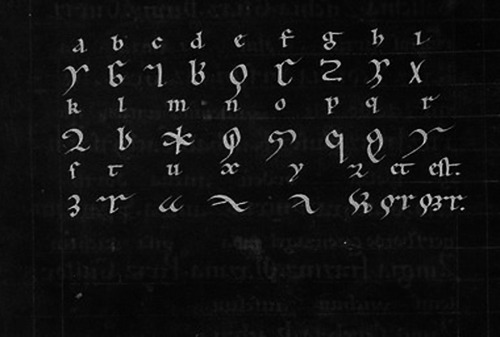Torus Configurations

Torus Configurations
Human consciousness is characterized by awareness, volition and cognitive reflection, operating within a neural workspace…Within this workspace, a bicyclic flow of information was envisioned…Both types of information flow provide the basis for integration of active information that returns to itself (a modality of self-consciousness), including modalities of universal consciousness.
Toroidal information flux is postulated by us to provide the basis for the existence of consciousness at the different scales of the Universe. There are distinct reasons to choose the multidimensional symmetrical aspects of the double vortex torus, a geometry that may mimic a combination of transversal, longitudinal and circular waves.
—Dirk Meijer & Hans Geesink, Consciousness in the Universe is Scale Invariant and Implies an Event Horizon of the Human Brain
More Posts from Sigilheart and Others

“Distribution for 18 fingerprint pattern types + relative effect size (arrows) in the Big Five personality dimensions Neuroticism & Extraversion, plus derived tendencies for the four classic temperaments: Choleric, Melancholic, Phlegmatic & Sanguine; displayed percentages represent the lowest- and highest value observed among the 4 personality groups (N+, N-, E+ & E-).“

Agnes Denes. Studies of Time—Explorations of Time Aspects, 1970

Hildegard von Bingen’s 23 litterae ignotae, letters for her constructed mystical language Lingua Ignota, ca. 1200.

The proposed integrative model of existential threat experiences
Daniel Sullivan, Cultural-existential Psychology: The Role of Culture in Suffering and Threat

Carl Jung, The Structure and Dynamics of the Psyche (Collected Works, Volume 8)

A schematic representation of the personality system.
‘Biological bases’ (such as genes) and ‘external influences’ (such as cultural norms) are inputs to the system. Personality traits are found in the category of ‘basic tendencies’, which are influenced by biological bases, but not external influences. Causal paths are indicated by arrows, and show that, over time, traits interact with the environment to produce ‘characteristic adaptations’ (such as attitudes), and these in turn interact with the situation to produce the output of the system, the ‘objective biography’. The ‘self-concept’ is a subset of characteristic adaptations of particular importance to self theorists. Adapted from McCrae and Costa (1996)
-
 3raofglitt3r reblogged this · 1 month ago
3raofglitt3r reblogged this · 1 month ago -
 3raofglitt3r liked this · 1 month ago
3raofglitt3r liked this · 1 month ago -
 laminatednewspaper liked this · 1 month ago
laminatednewspaper liked this · 1 month ago -
 comingtoyoursenses reblogged this · 1 month ago
comingtoyoursenses reblogged this · 1 month ago -
 sigilheart reblogged this · 2 months ago
sigilheart reblogged this · 2 months ago -
 blackswantale liked this · 6 months ago
blackswantale liked this · 6 months ago -
 farmwitch liked this · 1 year ago
farmwitch liked this · 1 year ago -
 stranger-chads liked this · 2 years ago
stranger-chads liked this · 2 years ago -
 phntem liked this · 3 years ago
phntem liked this · 3 years ago -
 my-sonhoindisposto-world liked this · 4 years ago
my-sonhoindisposto-world liked this · 4 years ago -
 hologram-evil liked this · 4 years ago
hologram-evil liked this · 4 years ago -
 sakrifice reblogged this · 4 years ago
sakrifice reblogged this · 4 years ago -
 sakrifice liked this · 4 years ago
sakrifice liked this · 4 years ago -
 chalcidoidea reblogged this · 4 years ago
chalcidoidea reblogged this · 4 years ago -
 exitwound liked this · 4 years ago
exitwound liked this · 4 years ago -
 terrorglamour reblogged this · 4 years ago
terrorglamour reblogged this · 4 years ago -
 terrorglamour liked this · 4 years ago
terrorglamour liked this · 4 years ago -
 moritat reblogged this · 4 years ago
moritat reblogged this · 4 years ago -
 doktari liked this · 4 years ago
doktari liked this · 4 years ago -
 eclypsica reblogged this · 4 years ago
eclypsica reblogged this · 4 years ago -
 eclypsica liked this · 4 years ago
eclypsica liked this · 4 years ago -
 beneath-beach-paving-stones liked this · 4 years ago
beneath-beach-paving-stones liked this · 4 years ago -
 polyurethane liked this · 4 years ago
polyurethane liked this · 4 years ago -
 moritat liked this · 4 years ago
moritat liked this · 4 years ago -
 heist liked this · 4 years ago
heist liked this · 4 years ago -
 funeral reblogged this · 4 years ago
funeral reblogged this · 4 years ago




